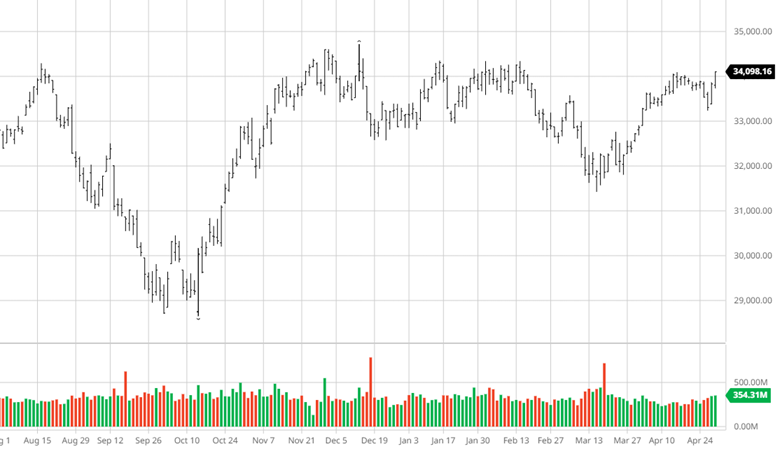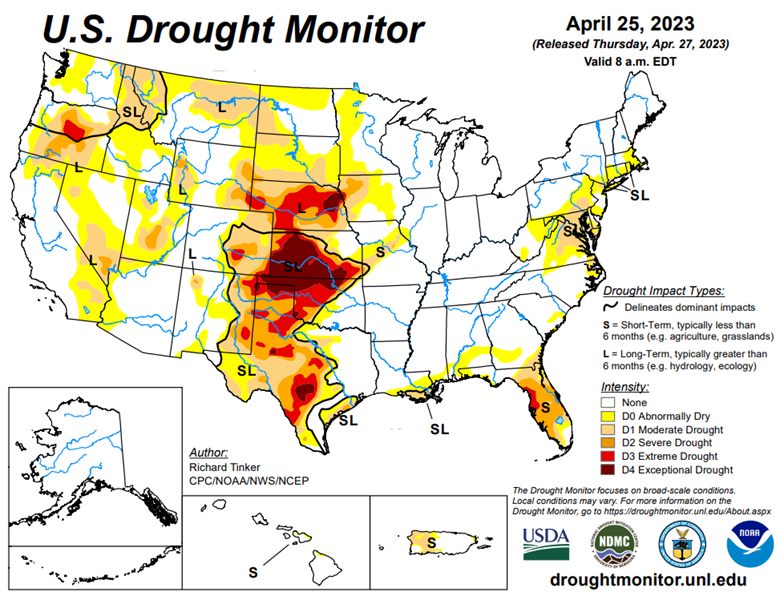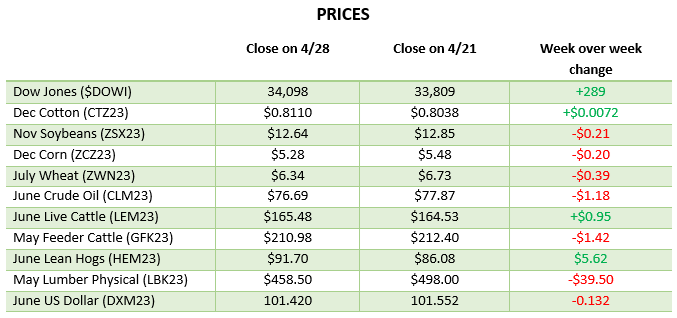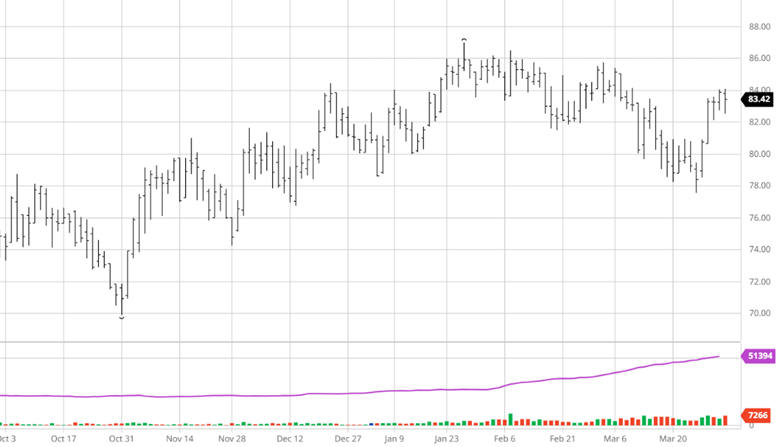
The USDA Report on Friday did not give any bullish news. But the overall muted market reaction was good to see as the overall report did not offer much to help prices. The USDA had production and ending stocks above pre-report estimates with the main number of US yield an expected 181.5 bpa. The USDA did not change their April estimates for Argentina’s crop, which remains higher than the numbers from the Rosario Grain Exchange but did raise the production estimates for Brazil. The USDA raised ending stocks on expectations for lower exports which matches the theme in the export space of late. The US crop planting progress was 65% complete to start this week.


Soybeans had a bad week, like corn, but did not have as bearish a response following the report as the numbers could have led to. The major numbers were in-line with pre-report estimates except for the ending stocks for similar reasons as corn, with lower exports and south American production. WASDE did not lower Argentina’s numbers for beans either. The world bean market needs to find a new demand angle to keep from being oversupplied if the US has a great growing year. The US soybean crop was seen as 49% planted to start the week.


Wheat was the lone warm spot of the report with some numbers coming in below trade estimates. The 23/24 world wheat ending stocks came in well above the pre-report estimates at 264.3 MMT (259.5 MMT) consumption and exports are lower. Wheat got a strong bounce, with KC leading the way, and should give corn some help. The Black Sea corridor will remain the biggest issue for commodities as any stops or problems will be supportive for Wheat.


Equity Markets
The equity markets were mixed this week with the Dow getting hit with losses, the S&P being relatively flat and the Nasdaq continuing higher. Tech continues higher after good earnings from the major companies and the market thinking the Fed is done raising rates and potentially lowering sooner. The markets are still waiting for a catalyst as it has been a story of the have and have nots as of late.

Drought Monitor
The eastern corn belt has gotten plenty of moisture as planting has begun while the western corn belt in some areas getting lots of moisture over the weekend.

Podcast
With every new year, there are new opportunities, and there’s no better time to dive deeply into the stock market and tax-saving strategies for 2023 than now. In our latest episode of the Hedged Edge, we’re joined by Tim Webb, Chief Investment Officer and Managing Partner from our sister company, RCM Wealth Advisors. Tim is no stranger to advising institutions and agribusinesses where he has been implementing no-nonsense financial planning strategies and market investment disciplines to help Clients build and maintain wealth and reach financial goals since
Inside this jam-packed session, we’re taking a break from commodities, and talking about the world of equities, interest rates, tax savings, and business planning strategies. Plus, Jeff and Tim delve into a variety of topics like:
- The current state of the markets within the wealth management industry
- Is there a beacon of hope, or is it all doom and gloom for the markets?
- Other strategies to think about outside of the stock market and so much more!

Via Barchart.com
Contact an Ag Specialist Today
Whether you’re a producer, end-user, commercial operator, RCM AG Services helps protect revenues and control costs through its suite of hedging tools and network of buyers/sellers — Contact Ag Specialist Brady Lawrence today at 312-858-4049 or [email protected].



























